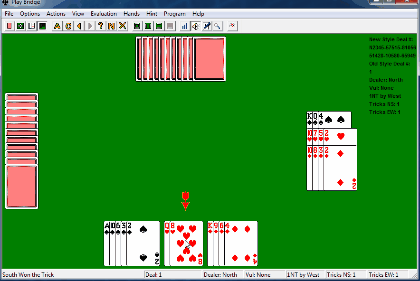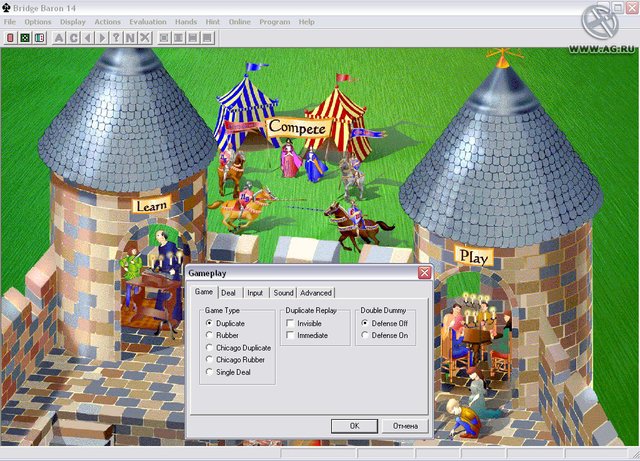

Version 2.7: (1) Bidding and play notes, previously 1-9, now allow 0 as a general note with no diagram reference (2) P label now allows a semicolon trick separator (instead of colon) to mean remaining plays are trivial (3) Case preserved for call denominations (CDHSNPXR) in the A label and suits (CDHS) in the P label to allow personal coding (4) N label allows an additional field for further info (5) B label now allows all characters to accommodate diverse usage. Carryovers now have separate fields after the team names. Version 2.8 effected a change in the K label format when carryovers exist. If the leader must be specified (not left of declarer) it is shown after declarer separated by a colon. Version 2.9 effected a slight change in the C label. Version 3.0 allowed more general use of the I label (item list) including multi-line listings for readability. Labels F and C allow additional fields (colon separated) for any user-desired purpose. Version 3.1 put the D label (date) first in standard output order to facilitate online file parsing. Either style is recognized by my utilities for input, but all lines in output files (RBN or RBX) will now end with a LF character (ASCII 10) only.

BRIDGE BARON GAMES TO PBN WINDOWS
Version 3.2 (latest): Line endings are changed from Windows style (CRLF) to Unix style (LF). It is ideal for maintaining a bridge database, and its intuitive coding will be familiar to any bridge player. RBN is compact and well-organized, based on many years of working with bridge data. My RBN utilities will verify data (noting errors) and easily convert to many formats (PBN, LIN, PPL, etc.) with options to filter data, correct certain errors, supply missing data on-the-fly, and split output into multiple files, e.g., to create separate files for each segment of a match. RBN conveniently stores any number of deals a complete match, an entire event, multiple events, etc. Single matches must be split into multiple files. For instance, the default ordering of tags is illogical, and the play syntax must have been thought up by monkeys.Īnother popular format is LIN (Bridgebase) which is excellent for display purposes (e.g., segments of a bridge match) but poor for archiving because of its limited file size (16 boards typically). PBN also has a number of design flaws, perhaps because it was derived from a notation used in chess (PGN) rather than originated for bridge. And why are brackets and quotes both required? Hello-o-o? Do I really have to write the word Vulnerable every time? Most people abbreviate it in ordinary writing, so this is outrageous for a data format.

For example, the syntax to state the vulnerability is. Probably the most notable attempt is PBN (Portable Bridge Notation) which includes a few good ideas but is hopelessly bloated. A variety of formats have been proposed, but in my view they dont pass the test. This should be flexible, simple and compact. In total they have played 9685058 boards.It is desirable to have a standard data format for recording, archiving and exchanging bridge deals. Up to this moment 12276 persons have registered. What do you have to do to get started? 1. Practised enough and ready for some tough competition? Join the online butler competition and compare your results with those of all other contenders. Customize these cards with over 50 conventions: Stayman, Jacoby, Multi-Landy, Checkback Stayman, RKC, DOPI-ROPI, Puppet Stayman, Truscott, Multi, Flannery, Fourth Suit Forcing, Negative double, Support double, Support cue. Possible base cards to choose from: Acol, Standard American, SAYC, 2 over 1. RoboBridge lets you compose your own convention card. A 2nd place in the indivdual event showed the great ability to play well with any partner. RoboBridge has participated many times in the world championship computerbridge. The robots provide a very high level of play, so you will be trained to always play your best bridge. It allows you to play some boards whenever you have time.
BRIDGE BARON GAMES TO PBN SOFTWARE
RoboBridge is free computer bridge software that simulates three human bridge players.


 0 kommentar(er)
0 kommentar(er)
